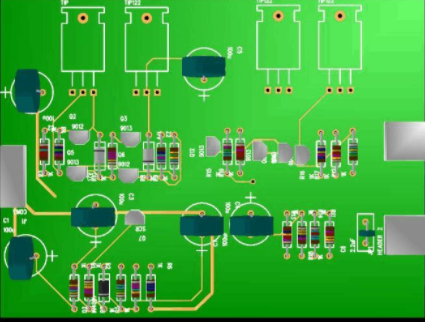PCB Drilling hole process is one of the most important components of the entire printed circuit board,its hole accuracy, hole diameter tolerance size, hole wall roughness, etc. will have a direct impact on the quality of the circuit board and the reliability of the product performance,so in the production process needs to be strictly controlled on the relevant quality programs.
PCB drilling quality defects and analysis to improve
1.Hole bias
1.1.Defect picture
1.2.Produce potential causes, that is, check the content of
poor quality of the drill tip grinding, such as the size of the edge, so that the positioning of the next drill is not accurate
Drilling speed is too high
Drilling speed too high
Drilling too many stacks of holes
High drilling speed
Too many drilling stacks
Excessive oscillation of the drilling spindle
Sundries on the surface of the plate
Unevenness of gasket and aluminum sheet.
Loose pipe nails.
Pipe position nail is too high, when drilling the pressure foot will pipe position nail crooked
Pipe position nail is too low, when drilling the board jumped out of the pipe position
Improper operation on the board (mainly thin plate)
1.3 Improvement methods
Control the quality of the drill tip grinding
Appropriate reduction of drop speed
Reduce the number of stacks
Re-adjust the precision of drilling machine.
Standardize the operation and remove debris on the surface of the plate before drilling.
Replace the flat surface of the pad, and use sandpaper to smooth the unevenness on the aluminum sheet.
Check whether the size of pipe nails matches with the pipe holes.
Control the height of the pipe nail than the plate surface 0.5-1.5mm high
Thin plate on the board with both hands on the board,parallel on the board.

2.Drilling burrs
Defect causes:
1.Excessive wear and tear of the drill, the drill parameters are not appropriate;
2.Unqualified quality of drilling pads;
3.Sundries between the plates or under the cover plate;
4.Failure to affix the cover plate;
5.Improper or no grinding after drilling.
Corrective and preventive measures:
1.Change the tool in accordance with the parameters and number of drilled holes specified in the process specification;
2.Check whether the quality of the mat board is qualified before feeding;
3.Before loading the board on the machine and the board to carry out a comprehensive cleaning to prevent the accumulation of debris in the gap between the board;
4.Each trip of the board is required to paste the cover plate,in order to reduce the generation of burrs on the copper surface;
5.Strictly implement the specification requirements for polishing operations after drilling.
3.Hole coarse:
Defects arising from the causes:
1.Inaccurate drilling parameter settings.
2.The wall of the knife residual drilling dirt.
3.There are notches, chipping and other damage to the drill cutter.
Corrective and preventive measures:
1.Select drilling process parameters scientifically and reasonably.
2.Before drilling operation, utilize ultrasonic wave to deep clean the drill cutter to ensure that the cutter wall is clean and free from pollution.
3.Before the drill cutter is put into use, its integrity and quality must be strictly inspected to confirm that it is undamaged and qualified before use.
4.Large/small holes
Reasons for defects:
1.Wrong drill cutter is used;
2.Improper feed speed or RPM setting;
3.Excessive wear of the drill bit;
4.Excessive repetitive grinding of the drill;
5.Chipping of the drill bit;
6.Drill bits are arranged in the wrong order in the drill press;
7.wrong position insertion when replacing the drill bit.
Corrective preventive measures:
1.Conduct a thorough quality check of the selected drill bit before drilling, including the cutting edge, length and size of the drill bit;
2.Adjust the feed rate and rotational speed to the most suitable working condition;
3.Replace qualified drill bits in time, and reasonably limit the number of holes drilled by each drill bit;
4.Control the number of resharpening of drill bits and limit the dimensional changes caused by each resharpening;
5.Use a magnifying glass to carefully inspect the tool surface of the drill bit before drilling, and find problems in time to return to grinding or scrapping;
6.Arrange the drill bits so that they are accurately placed in the designated tool magazine position;
7.When replacing the drill bit, clearly identify the serial number of the drill bit to ensure that it is correctly inserted into the corresponding position.
In the PCB production process,the drilling process is to ensure the quality of the circuit board is a key link.For hole bias,drilling burrs,hole roughness and hole size / small and other common quality defects, this paper proposes a number of potential causes of analysis and the corresponding corrective and preventive measures.By standardizing the process,strict quality control and meticulous operational practices, manufacturers can significantly improve the accuracy and stability of drilling, thus further ensuring the overall performance and reliability of the PCB.
With the continuous advancement of technology and process improvement, how to more accurately monitor and improve the quality of pcb drilling holes is still an important research direction.We hope that this article can provide useful reference for the industry and promote the continuous development and innovation of the PCB industry.